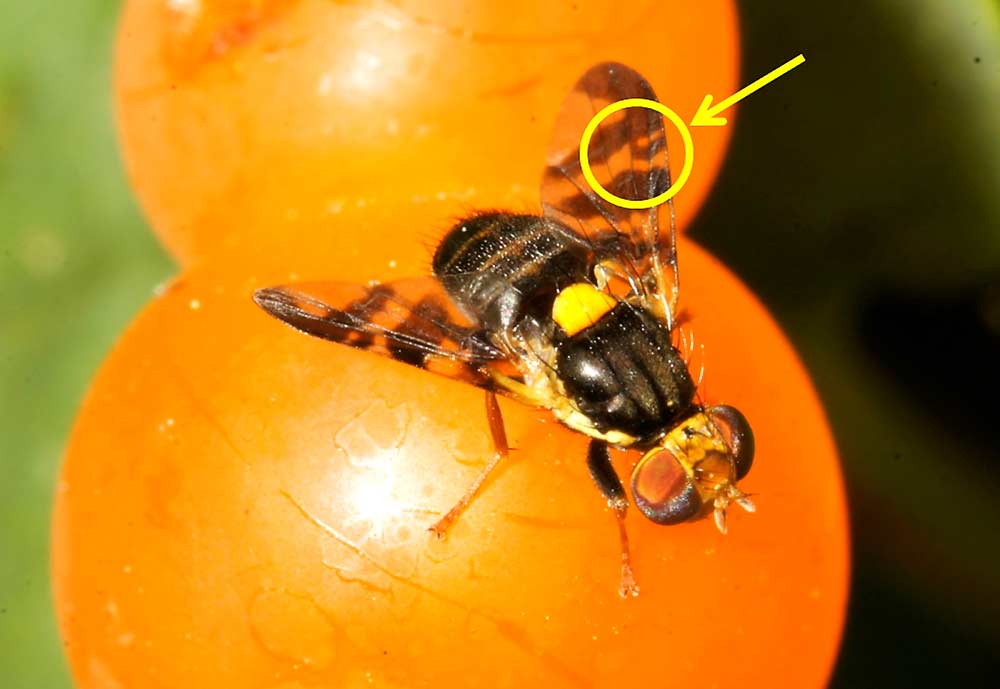
The pattern on the wing of the European cherry fruit fly, Rhagoletis cerasi, can be used to distinguish it from native fruit flies. (Courtesy Steve Paiero/University of Guelph)
Federal regulators have expanded the quarantine zone for the European cherry fruit fly in New York to now include all of Niagara County, as well as Erie County and portions of Orleans County. This is an expansion of the quarantine in the Niagara area set in 2018.
The new quarantine area covers about 1,600 square miles, including 534 acres of commercial cherry production, according to a news release from the U.S. Animal and Plant Health Inspection Service, APHIS.
European cherry fruit fly, Rhagoletis cerasi, is a serious pest of sweet cherry production in Europe. It was first found in North American in Ontario, Canada, in 2015 and was first detected in New York in 2017.
Establishment of the pest could prevent access to foreign markets and economic losses, according to APHIS.
It’s closely related to native North American fruit flies, so commercial producers in the New York region should be able to control it with existing pest control programs. A major concern posed by the fruit fly would be if it is eventually transported to California, where there is no native fruit fly in the cherry production region in the San Joaquin Valley.
APHIS and the New York State Department of Agriculture and Markets have set up a joint response effort to survey for and control the pest, working with commercial growers, residents and the state park system, since wild cherry and honeysuckle are preferred hosts for the pest.
Residents in the quarantine area are urged not to transport homegrown cherries or move soil from underneath known native host plants.
A detailed map of the quarantine area can be found on the APHIS website.
Related:
—Old World pest, New World wary
—Quarantine in New York’s Niagara County for European cherry fruit fly
—by Kate Prengaman






Leave A Comment